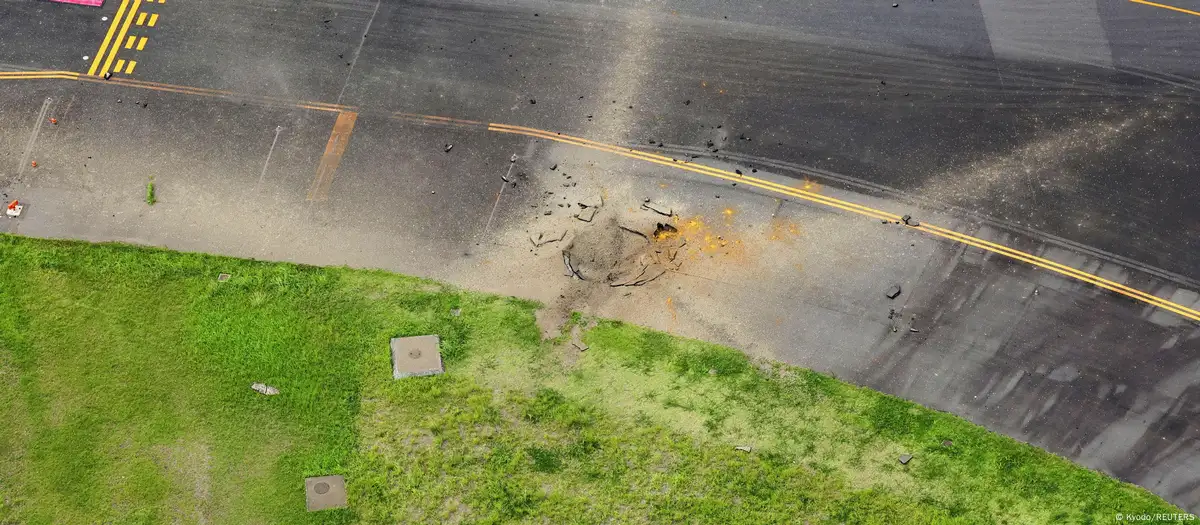Japan airport restarts flights after WWII bomb blast
Flights have resumed at a Japanese airport after a World War II bomb exploded just seconds after a passenger jet had taxied past it.

Southern Japan's Miyazaki Airport has reopened for flights on Thursday after an unexploded bomb from World War II exploded, causing dozens of flights to be canceled.
The blast blew a large crater in the taxiway, just under a minute after an aircraft had rolled past the spot toward the runway.
What we know about the explosion
About 80 flights were canceled on Wednesday, affecting more than 3,400 passengers, but there were no reports of injuries.
The hole in the taxiway was reportedly about 7 meters (roughly 7 yards) in diameter and 1 meter (3 feet) deep.
The airport damage was repaired overnight and flights resumed Thursday morning.
Japan's Self-Defense Forces bomb disposal team probed the site and concluded that the blast had been caused by a "US-made 250 kilogram (550-pound) bomb."
A nearby aviation school recorded a video that showed the explosion throwing pieces of asphalt into the air.
How often are unexploded bombs found?
A former Imperial Japanese Navy flight training field, Miyazaki Airport was built in 1943 as Japan found itself increasingly on the defensive in World War II.
Other unexploded US devices were reportedly found in 2021 and 2011 in the airport, as well as at a nearby building site in 2009.
Some of the pilots who took off from the airfield, on the island of Kyushu, were embarked on kamikaze suicide attack missions.
Defense Ministry officials say numerous unexploded bombs dropped by the US military during wartime have been unearthed in the area.
Hundreds of tons of unexploded ordnance remain buried around Japan, often being dug up at construction sites.
Even before the nuclear bombings of Nagasaki and Hiroshima in 1945, the US Air Force heavily bombed many Japanese cities.
Hundreds of thousands of people were killed, including some 100,000 on one night alone in Tokyo in March 1945.
rc/sms (AFP, AP, Reuters)







